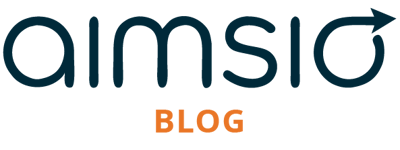It goes without saying that scheduling is a crucial element of effective personnel management, but that doesn't mean that companies have succeeded in doing it right. Many still struggle with inefficient scheduling procedures that have an adverse influence on both specific employees and the company as a whole.
Poor scheduling is caused by a number of things, including the use of antiquated, manual tools, a lack of labor visibility, and unconnected systems. Additionally, while a company may be able to function in the short term with a subpar scheduling process, it is very difficult to successfully manage and scale your workforce without a solid scheduling strategy.
Businesses may optimize workforce management to raise employee engagement and retention, gain operational efficiency, improve their quality of service, and—in the end—improve their bottom line by utilizing smarter scheduling techniques (supported by sophisticated tools).
What is Workforce Management Scheduling?
It's crucial to grasp scheduling as a component of workforce management before getting too technical. Workforce management (WFM) refers to the procedures and equipment a company employs to assist and enable its workers to fulfil their tasks.
Scheduling is an essential component of workforce management, particularly for the 80% of worldwide businesses that depend on mobility workers to provide goods and services on-site. Mobile workforce management (MWM) is a key element of these firms' larger WFM strategy, and it should be optimized to better support and empower staff, get rid of waste, and enhance communication and cooperation.
Without proper scheduling, organizations can’t maximize their workers’ time, ensure proper resource utilization, or meet the rising customer expectations; so it’s essential to leverage the right strategy for success.
Workforce Management Scheduling Challenges
The workforce is changing, and organisations' scheduling strategies must adapt along with it. However, for the majority of firms, accepting an appointment request and sending a staff to perform their duties is not an easy task. They frequently encounter a number of scheduling difficulties, including:
- Poor labor forecasting - Businesses find it difficult to accurately project future customer demand vs staffing demands without the right data and visibility into their workforce. They are unable to produce the reliable historical data needed to comprehend resource shortfalls and financial patterns and then staff appropriately due to manual tools and disjointed systems. Under-scheduling leads to delays, frustrations, and early burnout that have a detrimental effect on the employee and customer experience. Overscheduling results in overpaying on labor costs (without generating enough related revenue).
- Lack of flexibility - Providing services to consumers is not a set-in-stone procedure, but sadly, many teams' tools aren't adaptable enough to deal with change. Customers cancel last-minute appointments, employees become sick, and preferences change over time. Spreadsheets, online calendars, emails, and even whiteboards, which were once used for manual scheduling, are no longer active enough to keep up. Therefore, when an unforeseen schedule change takes place—such as an employee reporting for sick leave—it significantly disrupts the entire business. Employee productivity suffers, and customers become less satisfied, as staff schedulers waste time trying to find a suitable replacement or are forced to cancel the appointment altogether.
- Poorly integrated software – Many businesses invest in a variety of tools with the intention of better supporting their workforce. But if their systems don’t talk to one another, these tools become a hindrance to worker productivity and satisfaction, and make it even more difficult to obtain the data needed for informed business decisions. Plus, if employees are using disconnected software to access and modify their schedules and complete their daily work, they’re likely wasting valuable time digging for the information they need to serve customers. And in the back office, schedulers struggle to create fully-optimized, effective schedules without integrated software that offers real-time transparency into the workforce. Since poor employee experience with inadequate, disparate software can contribute to staff churn, it’s a notable issue with serious (and costly) consequences.
- Manual data entry - For many teams, manually entering data throughout the scheduling process is still an unpleasant reality. Staff schedulers experience mental exhaustion as a result of managing manual scheduling entries and modifications, weighing resource trade-offs, and attempting to comprehend availability. Since human data entry is error-prone, time-consuming, and leads to scheduling bottlenecks that slow down the entire operation, the business also suffers. Due to last-minute stress, fewer customers served, customer attrition, and unneeded idle time, this eventually has an impact on staff satisfaction, performance, and income.
Benefits of Effective Workforce Management Scheduling
Although there are many challenges in scheduling for successful workforce management, it is well worth the effort to overcome them. Businesses that include good scheduling practices' into their overall WFM plans benefit from a number of enticing advantages:
- Lower turnover rates - Companies with high employee engagement levels experience an 18% reduction in turnover compared to those with poor engagement. Making sure that remote workers' time and abilities are utilized properly is essential to maintaining their engagement. Effective workforce management scheduling makes the most of employees' time and gives them the freedom to use their knowledge and abilities. Mobile workers are correctly paired with customers (based on credentials, skill sets, experience, and more) with the aid of the suitable scheduling process and technologies, ensuring that they always feel connected to and satisfied with their work. Additionally, with a flexible scheduling system that takes into consideration their preferences and demands, individuals may maintain a healthy work-life balance. The outcome is a more contented, independent workforce that feels supported by their company, and is consequently more likely to be productive.
- Less burnout among employees - Optimized workforce management scheduling helps organizations provide more advanced notice for real-time scheduling changes, reduces unpredictability, and decreases the chance of unplanned overtime; each of which might otherwise contribute to premature employee burnout. They eliminate the overwhelming, burdensome task of manual scheduling, which alleviates some of the strain on staff schedulers. Instead of struggling to stay on top of ever-changing scheduling details (like worker availability, customer demand, updates, delays, etc.), schedulers have the visibility they need to quickly and easily build and modify schedules. And with the right tools, everything from travel time, route optimization, location tracking, and more is available in a single, centralized place, so both back-office schedulers and mobile workers have everything they need to delight customers without the stress that leads to burnout.
- Higher operational efficiency - Scheduling has an enormous impact on operational efficiency, and an effective process can eliminate the obstacles that slow your team down. Automated tools, for instance, remove the bottlenecks caused by time-consuming, manual, repetitive tasks like trying to create a schedule on paper or in Excel. When changes occur, the schedule can be updated and shared in real time, so no one misses a beat. Some solutions offer powerful scheduling and dispatching tools that not only reduce scheduling costs (with the ability to handle multiple jobs simultaneously while also getting the right person to the right job), but also streamline processes for a more productive workforce. Even better if the tool you choose is mobile-first and integrates with your other existing systems, so your data can become your competitive advantage. Leveraging sophisticated workforce management scheduling tools and processes can help you cut back on the time and money spent on data transfers while also providing real-time visibility for smarter decisions that further improve your operation.
- Consistent quality of service - As a customer, reliable, convenient scheduling is a key factor in choosing a service provider. But in order to ensure consistently strong customer service, organizations need processes and tools that provide complete transparency into the employee pool, streamline communications between back-office staff, mobile workers, and even customers, and can easily adapt to last-minute changes.
Successful workforce management scheduling can help boost the quality of service by providing the business with a bird’s eye view into individual performance, broader customer demand, and whether or not their team is meeting client expectations. Dynamic, flexible schedules enable them to serve more customers throughout the day, and quickly adapt when inevitable changes occur, so customers aren’t dealing with irritating cancellations or delays.
Some workforce management scheduling technologies even offer automated, real-time updates, so customers are sent accurate arrival times or are notified when a service provider is running late. Workers have everything they need at their fingertips to arrive well-prepared to every customer appointment, which instills confidence and boosts satisfaction for employees and clients alike. - Lower labor costs - For businesses with a mobile or blended workforce, labor costs can be much more volatile than for those with a steady, salaried employee base. One of the easiest ways to reduce labor costs is to decrease or eliminate unnecessary overtime—which is typically the result of not having enough data or visibility into capacity and scheduling. By optimizing workforce management scheduling, managers and schedulers have all the information they need to make smarter scheduling decisions, identify trends, and ensure more jobs are completed throughout the day. With strong processes and tools, an organization can accurately account for travel time between jobs, utilize key staff details (e.g. qualifications, location, experience, etc.) to build an effective schedule, and avoid issues in under-utilization or under-staffing. Plus, effective scheduling benefits workers by reducing unpredictability and burnout from unplanned overtime – which boosts satisfaction and reduces the costs associated with recruiting, hiring, and onboarding to address turnover.
Workforce Management Scheduling Strategies
Schedule tasks according to skill levels and more
To ensure both efficiency and an excellent customer experience, your organization needs to identify the right person for the job. You might consider some basic factors, like equipment, experience, and proximity to the job to determine the proper fit. But scheduling around those rudimentary details alone likely won’t help you reach your more strategic business goals; such as lower costs, higher customer retention, better employee development, or reduced turnover.
Since your business’s priorities can shift over time (or even from one job to the next), you need a scheduling strategy that helps you schedule tasks that align with those objectives. Make sure your scheduling process takes a wide variety of factors into consideration, such as:
- Required skills and qualifications
- Experience
- Language preferences
- Gender preferences (especially in healthcare)
- Necessary certifications and licenses
- Current location versus proximity to the job
- Current work in progress
- Employee preferences
Then, optimize the skills and talent of your workforce by matching the right worker to the job based on all of those elements. If, for instance, you have a customer with a history of highly challenging installations, don’t send a green technician to complete the job. Instead, send a specially trained tech with the proper experience, certifications, language capability, and availability. That way, the client will be met with a well-prepared technician who is ready to get the job done right the first time—and the worker won’t be stuck with a complicated job they’re not qualified to complete on their own.
Integrate your software
If your team stores customer information in a CRM, crafts daily schedules on a spreadsheet, has separate systems for billing and finance, and uses various tools for their HR and personnel needs, it may be time to rethink things. These disconnected systems can turn a simple scheduling request into an overly-complicated, time-consuming process:
- The staff scheduler must shuffle through the customer database to find information around the account, client, job specifications, history, and more.
- Then, they must examine the schedule, which may or may not be an accurate, up-to-date version, to identify an available worker.
- Using that larger pool of potential service providers, the scheduler then digs through the list to find the right person for the job (based on skill set, certifications, location, existing customer relationships, etc.). This generally requires several emails, spreadsheets, phone calls, and calendars.
- Next, the staff scheduler will navigate the worker to the job site
The mobile worker must complete the assignment (likely without real-time access to all the necessary job details), and capture any job notes or customer information, then transport those details back to HQ. - Back-office workers will then process the customer information, worker timesheet, and other required forms
- Finally, they’ll send that information to the appropriate internal people, who will then re-enter the data into the relevant systems.
With integrated software, though, the process becomes much more efficient. The staff scheduler automatically sees who’s available and qualified to take the assignment, and sends them to the job site with the push of a button. They can even alert the client when the mobile worker is on the way, and notify them of any delays. The deskless worker can collect all field notes in their centralized, mobile app, and sync all of that data back to the office in real time. This enables a better employee and customer experience, and maximizes the number of customers served throughout the day.
Automate time tracking
When businesses rely on their employees to individually track and manage their working hours, details tend to fall through the cracks. If a mobile worker has to manually fill out their timesheet, return it to the office, and wait for HR and finance to process the information, there are several opportunities for things to go awry.
The process is even worse if different departments don’t share data with one another. Any corrections or changes made to the data by one department may never be communicated with the other, which causes invoicing and payroll errors and delays. At the same time, the back office doesn’t have the visibility it needs to understand the number of jobs completed in real time, nor how many are pending—which can negatively affect pipeline planning.
But by automating time tracking, the business has an unmitigated, real-time view into hours worked, jobs in progress, and availability. Using this detailed information, they can better avoid unnecessary overtime and burnout. Using sophisticated, automated tools, mobile workers can instantly check in and out of jobs. That data is connected to HR and finance, so invoicing and payroll are accurate and timely. This leads to happier customers and employees, who are met with error-free invoices and paychecks every time.
Collect and analyze data and reports
Data-driven companies earn 20-30% more than their peers, yet many organizations still lack the interoperability and analysis required for intelligent business decisions. This extends to scheduling, too, where an efficient process is grounded in both historical and real-time data.
Consider, for example, periods of lower- or higher-than-average customer demand. How does your team account for such changes without running into issues of under-utilization or under-staffing? And how does your business identify and resolve issues related to inadequate scheduling—like a high percentage of late arrivals, a long time-to-schedule, or high travel time—if you don’t have accurate data that shows what’s really happening?
With the right scheduling tool, your company can capture key workforce data (from a variety of integrated sources) that can be analyzed for a deeper understanding of all of your critical business functions. That way, you can make informed decisions that improve the scheduling process and, in turn, enhance service delivery, customer experience, and employee satisfaction.
Communicate with your team members
Effective communication is essential to every business’s success, but is often a challenge for companies with employees who work both in the office and in the field. If they don’t have the proper tools to communicate potential delays, sudden schedule changes, current locations, or the need for an extra helping hand, both job performance and customer satisfaction suffer. Plus, staff schedulers can’t build effective schedules if they’re not aware of issues in the field as they occur.
It’s vital to arm your workers with tools that offer real-time, streamlined communication, regardless of where they are. Mobile-friendly tools help teams to avoid miscommunications, oversights, and mistakes that otherwise diminish the customer experience. With the right technology, schedulers can instantly share last-minute updates or cancellations to both customers and deskless workers. And mobile workers can collaborate with one another while in the field to get the job done right the first time.
Intelligent Scheduling for an Optimized Workforce Operation
In conclusion, effective workforce management scheduling is a critical component of successful personnel management. Companies that struggle with inefficient scheduling procedures can benefit greatly from adopting smarter scheduling techniques supported by sophisticated tools like Aimsio. By optimizing workforce management scheduling, businesses can advance their workforce in several ways. They can raise employee engagement and retention, improve operational efficiency, enhance the quality of service provided to customers, and ultimately improve their bottom line. Through strategies such as scheduling tasks based on skill levels, integrating software systems, automating time tracking, and collecting and analyzing data, companies can overcome scheduling challenges and reap the rewards of effective workforce management scheduling. Additionally, fostering effective communication among team members using real-time, streamlined tools ensures smoother operations and better customer satisfaction. With Aimsio's advanced features, companies can revolutionize their scheduling processes and unlock the full potential of their workforce.
To learn more about how Aimsio can help your company embrace these trends and achieve their goals, we encourage you to a book a demo with us today.




.png?width=150&name=aimsio-white-430x88%20(1).png)
Submit a Comment